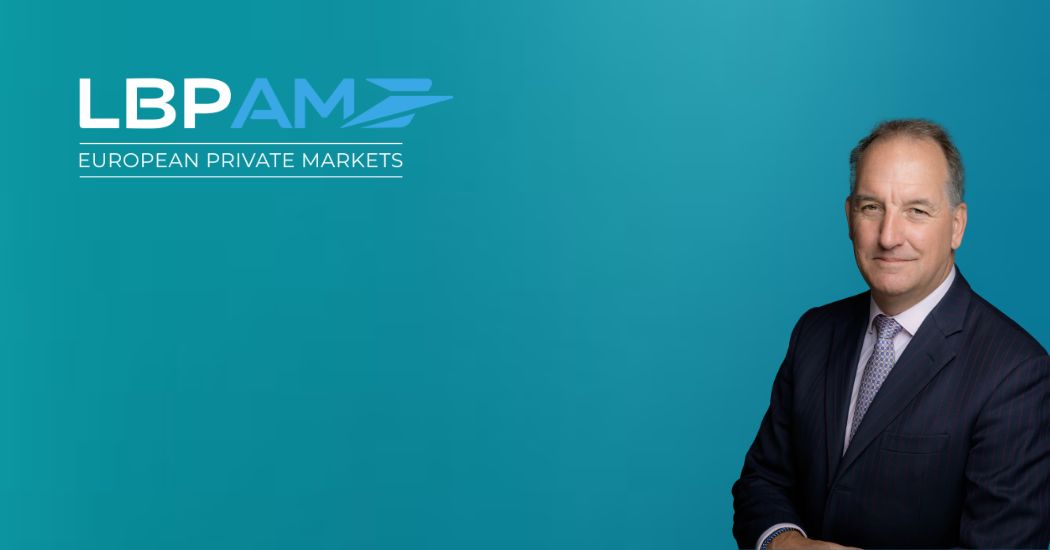Creating global champions
19.06.2025|9 min

Private debt has a critical role to play in improving the competitiveness of European companies and in helping to create global leaders, says Peter Arnold, head of LBP AM European Private Markets.
How can corporate debt help make European companies more competitive?
Due to Europe’s fragmented nature, while there are many national champions,there aren’t as many pan-European champions as we have in the US. Private debt has a role to play in helping create those pan-European leaders.
Equity may not always be the only tool available to these businesses, as debt can facilitate growth through providing capital expenditure funds, supporting research and development, product expansion and investment in new technology, for example. Debt can also be used to finance strategic acquisitions, allowing businesses to integrate value chains and enter new markets and new geographies.
By using available debt solutions, companies can scale operations without diluting their equity, leading to cost efficiencies and improved market positioning. Meanwhile, it can also provide the flexibility to meet market challenges and to optimise the capital structure.
Finally, environmental and social sustainability considerations are deeply entrenched in the European market, more so than in the US or Asia. Sustainable financing can helpEuropean companies on that journey.
How mature is Europe’s private debt market today compared with other regions?
Europe is ahead of Asia – which, except for a handful of countries, is still largely a banked market – but it is definitely not as advanced as the US. Huge progress has been made over the past 15 years, as European small and medium-sized enterprises have come to realise that they can access finance outside of the banking system, but that education process is still ongoing, particularly in the true lower mid-market. I would say that we are still behind the US in this area. But we are certainly closing the gap. Today, a high percentage of SME funding needs in Europe are being met by non-bank players and I expect this to grow further.
Which strategic sectors in Europe are benefiting most from private debt financing today?
The energy and the digital transition innovation are both important strategic themes in Europe, penetrating right down into the lower mid-market. There is a growing awareness in these segments that you don’t need to dilute equity in order to grow digital or energy transition platforms. There are debt solutions available to help drive growth and improve EBITDA.
We are also seeing a lot of interest in health, not only at a national level, but at a local, granular level. Private debt is helping founders consolidate their loans into one line, supporting M&A, driving efficiency and helping fund research and clinical trials. Private debt helps bridge the gap between early-stage development and revenue generation. The final sector I would point to is artificial intelligence and cybersecurity.
How are corporate debt structures adapting to new challenges, such as the energy transition and AI?
When it comes to themes such as the energy transition, we are starting to see a crossover from traditional project finance to corporate-like structures. We are seeing debt solutions being used across the capital structure, financing at various levels across projects, be it at the holdco, midco or operating company level. This is leading to increased due diligence in protections covenants, environmental impacts and technology viability and scaleability.
We are also seeing more junior debt being used, despite the higher price for borrowers. In particular, junior debt is being used to fund capital expenditure growth to increase revenues of the project or business, so that the borrower can then come back to market and refinance with cheaper debt at a later date. Payment-in-kind is becoming more prevalent for similar reasons.
In addition, we are seeing a real transformation in Europe’s lower mid-market, which does not always have the same access to finance as the larger LBO space. More bespoke private debt solutions are being used to allow the founders of non-sponsored or minority-sponsored companies to improve the efficiency of their capital structure to help with M&A or supply chain resilience.
Are differences in regulation from one European country to another a barrier to the development of private debt financing?
We are seeing improvements in terms of Europe’s regulatory fragmentation. Recent rule changes benefiting lenders in Italy are a prime example of this.
Meanwhile, the reality is that there tends to be a lot of growth potential within individual countries, such that many SMEs focus on local expansion. It is also fair to say that pan-European companies can usually deal with this fragmentation by funding an acquisition in Italy or Spain, for example, in the UK and under UK law. As such, a lack of regulatory uniformity isn’t really inhibiting dealflow, but greater harmonisation could help with accelerating dealflow across the private debt spectrum.
If we want to foster European competitiveness and create Europe-based global champions, however, more harmonisation would certainly be beneficial, which is what the EU Capital Markets Union is aiming to do. This is front of mind, given everything that is happening with President Trump and his tariffs.
What role can asset managers play in the emergence of European champions?
Asset managers can help create European champions through their flexibility and willingness to provide customised solutions. It is important to understand what a business is looking to achieve and to offer a bespoke response in a way that banks are not always able to do. As lenders, we are not taking the same risks as private equity, of course, but engaging with management teams in the way a private equity firm would – in order to understand the business’s ambitions and to provide a customised solution – is something we are looking to do more and more.
As asset managers, we can also encourage businesses to think cross-border. A company in France may not be aware of a similar platform in Germany, for example. But as pan-European lenders, we may be able to help those companies engage with one another, potentially achieving synergies.
I would add that given the proliferation of sustainability initiatives and frameworks in Europe, this is another important area where asset managers can provide support. For example, we worked with a company in France which was able to improve its environmental, social and governance credentials and make significant savings.
This meant it could hire an ESG expert, who has since made further rationalisations around sustainability and climate mitigation. The company can see a pathway to potentially lower its cost of borrowing as a result.
Given the macro uncertainty and growing caution among banks, what role do you see private debt playing in supporting Europe’s lower mid-market going forward?
Europe’s large LBO market is relatively well served in terms of private debt availability, but in the lower mid-market, access to private debt is still something of a work in progress compared with the US. An ongoing education process is required in the advisory community to ensure corporates recognise that they do have options when it comes to financing expansion, consolidation or optimisation.
Further harmonisation of regulation will also support the continued expansion of private debt into the SME space, allowing platforms to grow on a pan-European level, boosting competitiveness along the way.
